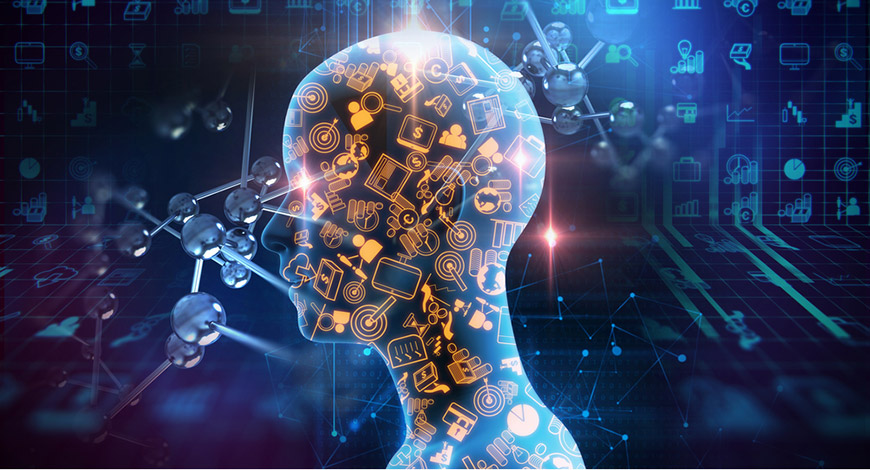
Redefining Engineering Education In The Artificial Intelligence (AI) Era
Add Your Heading Text Here

We are on the definitive cusp of the 4th Industrial Revolution. Earlier industrial revolutions ushered mechanization of previously manual tasks, leading to a huge shift in production output and increased operational efficiencies while creating a new range of skills for the workforce to master. According to Klaus Schwab, Founder and Executive Chairman of the World Economic Forum, the transformation driven through this technological revolution will be unlike anything that humankind has experienced before and will require an integrated and comprehensive response involving all stakeholders of the global polity – from the public and private sector businesses, academia, and civil society.
Industry 4.0 – defined by breakthroughs in emerging technologies such as Robotics, Artificial Intelligence, Internet of Things, 3D Printing, Autonomous Vehicles and Quantum Computing – will yet again create a massive shift. It is increasingly common news that a manufacturing major is introducing robots on the production line. With smarter factories, smarter production and smarter supply chains, running autonomous production and delivery of manufactured goods, the question is bound to arise – what are the engineers supposed to do?
Engineering has long been a highly sought-after stream of education in India. Consider this – approximately 1.5mn students graduate out of 3,000+ AICTE-affiliated institutions in India, every year. [However, endemic problems surround their quality and technical output. Research after research confirms the disconnect between the education imparted to students, and the skills required on the job. According to the National Employability Report 2016, conducted by Aspiring Minds, 80% of engineers are considered unemployable. Even in India’s highly vaunted software industry, 95% of engineers are thought to be unfit to take up software jobs.
If the average Indian engineer is unfit to perform the tasks expected from him today, what hope is there for him to be able to perform the jobs of tomorrow? The 4th Industrial Revolution is only going to complicate matters by contracting the number of available jobs, while looking for specialized skills that Indian engineers most likely won’t have. One example, according to Talent Supply Index 2017 published by hiring startup Belong, there are only 8 data scientists for every 10 data scientist jobs in India.
It is undoubtedly a matter that needs urgent attention from educational institutes. The need for alignment between the skill-suppliers (colleges) and skill-consumers (businesses) is greater than ever before, and it is critical that educators stay in step with this new wave of industrialization, or risk falling by the wayside.
Embedding AI in engineering streams
Artificial Intelligence is the cornerstone of this new wave of industrialization. Embracing emerging technology areas will ensure that the engineering workforce is relevant for the jobs of the future and their knowledge needs to be embedded in traditional engineering syllabi. It is commonly assumed that AI only happens at the intersection of computer science and mathematics. While that is somewhat true at present, other streams too are looking at developing topical AI programs. Let’s look at these other engineering fields and how AI can be embedded into their existing coursework.
Civil or Construction Engineering is often considered to be far removed from AI disruption. However, AI is already making in-roads into this field. With geo-spatial intelligence and historical earthquake data, civil engineers can make better decisions on assessing the landscape available for projects, understand the materials required to withstand environmental conditions, or at times drop a risky project that might be too dangerous to develop. AI-driven predictive maintenance helps engineers optimally predict maintenance schedules for civil infrastructure developed – mitigating the risks posed by damaged infrastructure to civilians. AI can also help parse image data to detect damage to property, assess the extent of repairs required, and the costs of that repair work. Beyond these, AI can also help design smarter buildings – optimally utilizing electricity and water resources, while also bringing efficiencies to construction costs by automating inventory procurement decisions.
Another stream of engineering assumed to be immune from AI intervention is Chemical Engineering. Chemical Engineers with an understanding of AI can reduce the time for new chemical development, by modeling the impact of chemical combinations. AI can help predict and test the quality and resilience of new formulations. Chemical engineers with a knowledge of how to operationalize robotics technology for combining potentially dangerous chemicals – will again be an important intervention in this area of engineering.
Even across diverse engineering domains – metallurgy, oceanology and aerospace engineering, knowledge of artificial intelligence will be critical. Metallurgists with a knowledge of AI can run models to understand the properties of various metals and build stronger and more purpose-driven alloys. Oceanographers can leverage AI technology to parse geospatial information to better understand sea-beds and model the chemical and physical properties of oceans. In Aerospace Engineering, AI can bring untold efficiencies through robotics for assembling components. AI can predict failures and maintenance schedules required for aerospace equipment. In each of these domains, knowledge of AI, Robotics, Predictive Analytics, Computer Vision and Deep Learning will help ingest large volumes of unstructured disparate data, autonomously generating insights in a much lower time span – while improving the speed of the production process.
Finally, in certain streams within engineering – Mechanical, E&TC and Electrical – AI lends itself more naturally. Mechanical Engineers need to upskill themselves to develop and run autonomous robots that can do complex assembly and integration tasks. Education in Electronics Engineering needs to tend more in favor of developing Industrial IoT, Quantum Computers and advanced chipsets that can handle the large-scale processing required to run cross-platform AI applications. Electrical and Telecommunications engineers, given an education in Artificial Intelligence, can automate, monitor and improve the uptime and performance of their respective systems.
Leading the Way
A substantial chunk of upskilling needs of existing engineering graduates are handled by online courses. We are seeing an increased proliferation of AI, Machine Learning, cybersecurity, IoT, and Robotics courses delivered by online educational platforms: Coursera, Udemy, Udacity, UpGrad, while their programs are well serving the current crop of engineers, some of the other prominent academic institutions and academies – ISB , Manipal global education , Jigsaw Academy , IFIM , Institute of Product leadership (IPL) ,UPES, Praxis Business School , Shiv Nadar engineering school, IITD are few listed ones that have taken vantage position in imparting AI , Analytics programs . A structured learning and innovative pedagogy approach are needed from traditional educational institutes for skilling new engineering graduates, to be able to master these new means of learning. They need to alter their curriculum to ensure that the next generation of engineers is equipped to handle the next generation of opportunities. However, it is very important that other institutions also follow suit and promote the cause of AI education.AI will usher a new beginning in the education arena and the ones that have the ability to learn, unlearn and relearn will succeed in the professional spheres.
Related Posts
AIQRATIONS

Training Programs Can Enhance The Skills And Employability Of The Existing IT Workforce
Add Your Heading Text Here

Several pieces of research, studies and content have been published about the exponential growth witnessed in emerging technologies – AI, blockchain, RPA, cybersecurity, IoT, AR/VR. There is no doubt that these are the emerging technologies of the future, which will help catapult the next growth spurt of enterprises. Professionals across the information technology landscape are queuing up to upskill, reskill themselves across these mentioned areas to continue to be relevant in the workforce for tomorrow. But for those who already have learning, skills and experience in these emerging technologies, how can they take their career to the next level?
The flux of deployment-ready and value-generating use cases across industries suggest that a cross-technology expertise across these emerging technology areas would be the next big source of career growth for incumbent professionals. We witnessed few years ago, software developers were keen to reinvent themselves as full-stack developers. High performing technologists wanted to develop proficiency across the software architecture and the development life-cycle – from database to UI, and from infrastructure set-up to deployment. Similarly, IT professionals today should seek the synergistic benefits of combining areas across emerging technologies. This article will focus on what emerging technology areas are being effectively combined by enterprises.
AI + Blockchain
Artificial intelligence is the set of technologies that help machines mimic human functions. Blockchain is the emergent technology paradigm that helps build a distributed, immutable sequence of financial events and transactions. With a strong uptick in the dispersion of blockchain use cases, enterprises are also looking for a robust way to surface potential fraud and other anomalous events in real-time. The events of fraud attempt and security threats to blockchain systems are often very high-speed and require immediate attention and analysis to ensure that the perceived anomalies are rooted out. Using AI, specifically machine learning, we can rapidly parse through a log of events to find anomalous situations and flag them off in real-time, protecting the integrity of the blockchain.
AI +IOT
Internet of Things is the network of physical devices that exchange data. This very definition makes the case for combining artificial intelligence and IOT plainly clear. IOT-enabled sensors usually are a source of multitudinous data – based on the use case employed – which is increasingly being sent to the central controlling server in real-time, rather than in batches. Picking out key inferences from voluminous data, sent in real-time by numerous sensors is a task that is again handed over to AI systems – typically machine learning systems. While IOT systems can ably sense, transmit and store data, ML systems are required for making sense of the data and providing input on whether any action is required to be taken, and potentially even suggesting what best-case action could be taken.
IOT + Smart Cities
While the concept of a Smart City is a sub-segment of IOT, it’s the other way around. IOT forms only one of the component of powering a smart city. In addition to IOT, the Smart City stack would typically also include cloud (for running processes and storing data), Artificial Intelligence (for data analysis and learning) and an element of urban planning (for deciding the what and how of a Smart City design). By combining knowledge of IOT with these other ancillary areas can help IOT professionals become valuable and irreplaceable resources in this fast-growing technology area.
AI + Behavioral Sciences
This final combination may sound surprising, but one of the most valuable and high-impact grouping of skills might just be the combination of data science and behavioral science. While AI and data science can provide the what (‘What happened?’ And ‘What should we do now?’) of a business scenario, behavioral sciences inform the how part. Consider the example of Amazon, which has numerous examples of the coming together of behavioral sciences and AI. The recommendation engine uses artificial intelligence to answer the what part of ‘what are other people buying’. But, the idea that it will lead to continued stickiness on the website, serve as a wide showcase of SKUs available on it, while promoting product bundling and larger cart sizes is a clear behavioral sciences intervention and contributes massively to the success of AI applications.
If you are a professional already conversant with one of the emerging technology areas, combining that with another emerging area can be hugely beneficial. IT professionals today in these areas should strongly consider leveraging synergies across multiple technology areas – which can help them be better-rounded, high-value practitioners in an ever evolving areas of technology.

